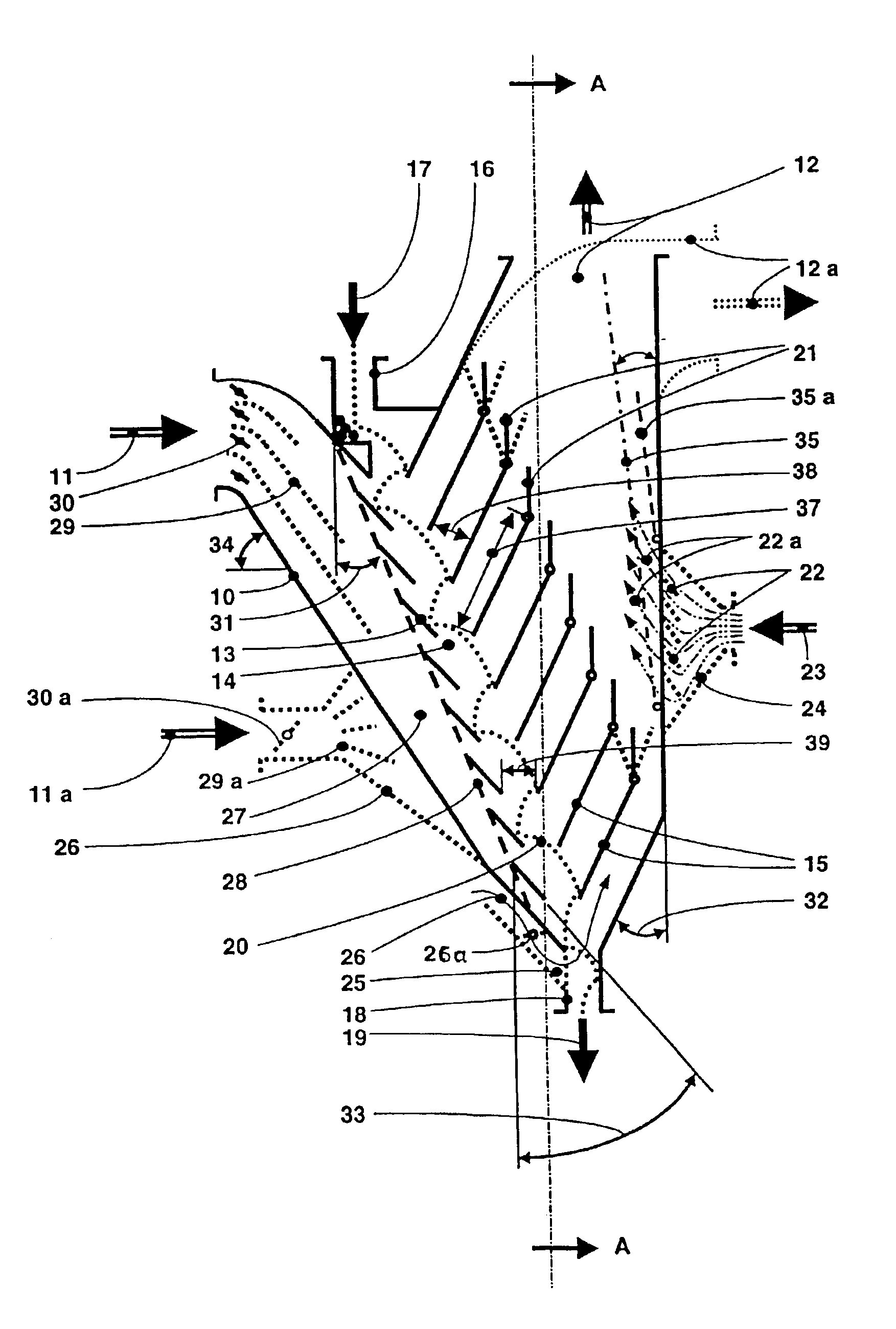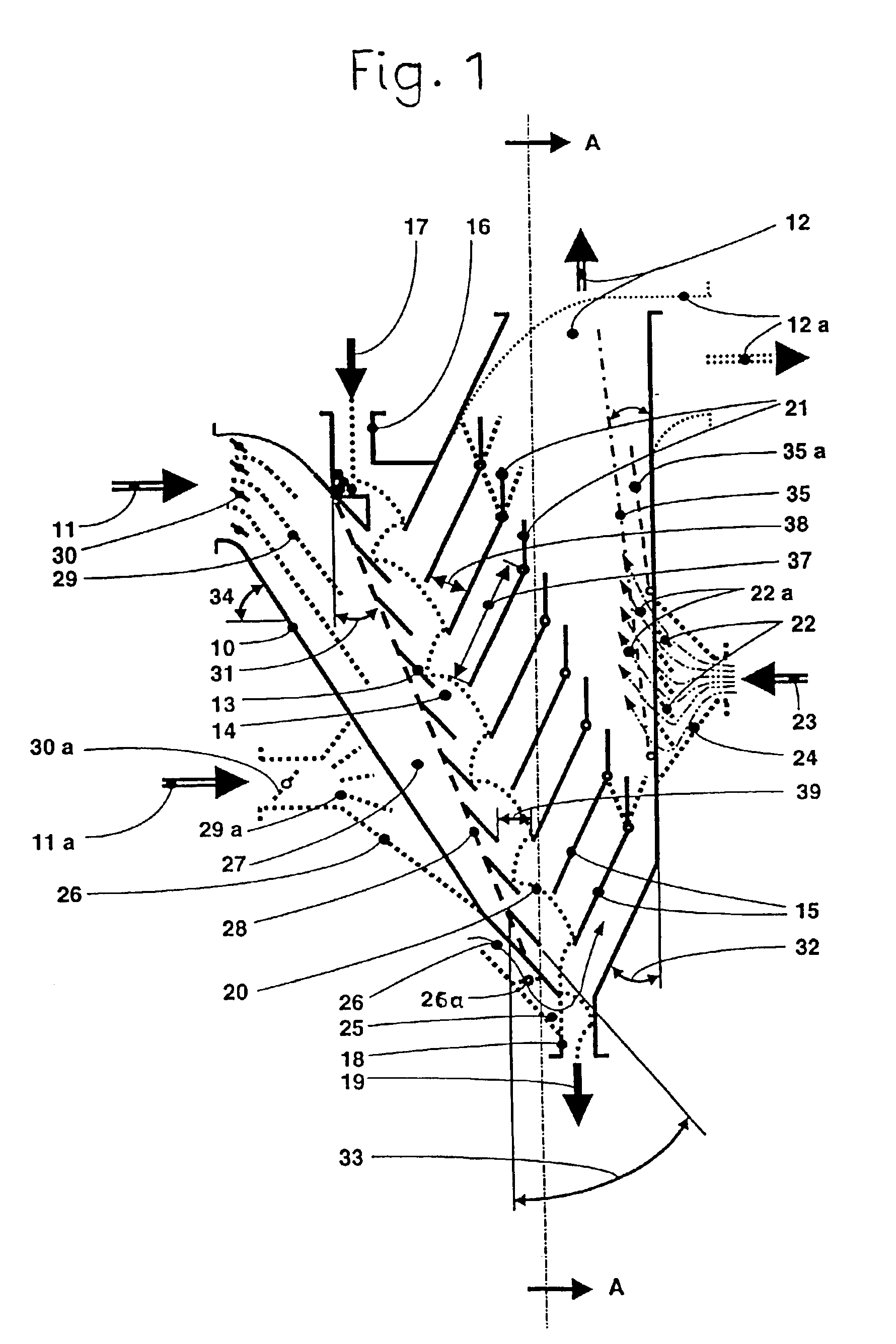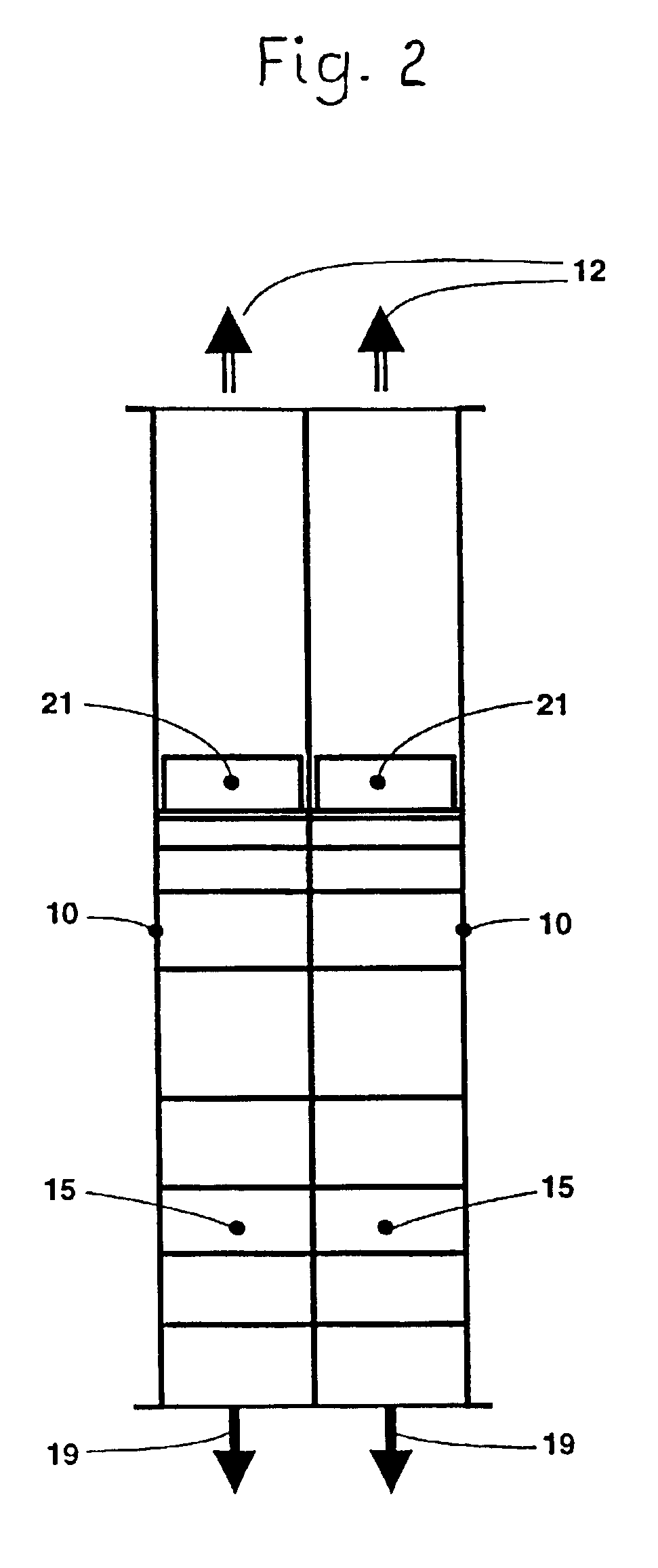Classifier for the classification of granular material
a technology for granular materials and classifiers, applied in the direction of gas current separation, solid separation, chemistry apparatuses and processes, etc., can solve the problems of increasing construction costs, increasing pressure drop, and not always guaranteed, and achieves high separative efficiency and increase the separative efficiency of static classifiers.
- Summary
- Abstract
- Description
- Claims
- Application Information
AI Technical Summary
Benefits of technology
Problems solved by technology
Method used
Image
Examples
Embodiment Construction
Referring to FIG. 1, the classifier has a housing 10 with a left leg or housing part in the form of an intake duct 27 into which classifying air 11 flows in laterally from above, and from a right leg or housing part of which a fines-laden classifying air 12 flows upwardly or at another arbitrary angle, for example 12a. The fines-laden classifying air is extracted via a fines collector by an induced-draft fan. It is also, however, possible to deliver fines-laden classifying air 12 directly to a reclassifier, which can be a static classifier or a dynamic classifier. Other drying gas can be used as a classifying gas in place of the classifying air 11 in case a moist classification feed is to be dried.
Built obliquely into housing 10 is a stairway cascade 13 permeable to classifying air 11, which cascade lies at an angle 31 departing from the vertical, which angle can lie in a range from 5° to 45°. Classifying flues 15 lying one above another in louver fashion, ascending obliquely upward...
PUM
 Login to View More
Login to View More Abstract
Description
Claims
Application Information
 Login to View More
Login to View More - R&D
- Intellectual Property
- Life Sciences
- Materials
- Tech Scout
- Unparalleled Data Quality
- Higher Quality Content
- 60% Fewer Hallucinations
Browse by: Latest US Patents, China's latest patents, Technical Efficacy Thesaurus, Application Domain, Technology Topic, Popular Technical Reports.
© 2025 PatSnap. All rights reserved.Legal|Privacy policy|Modern Slavery Act Transparency Statement|Sitemap|About US| Contact US: help@patsnap.com



